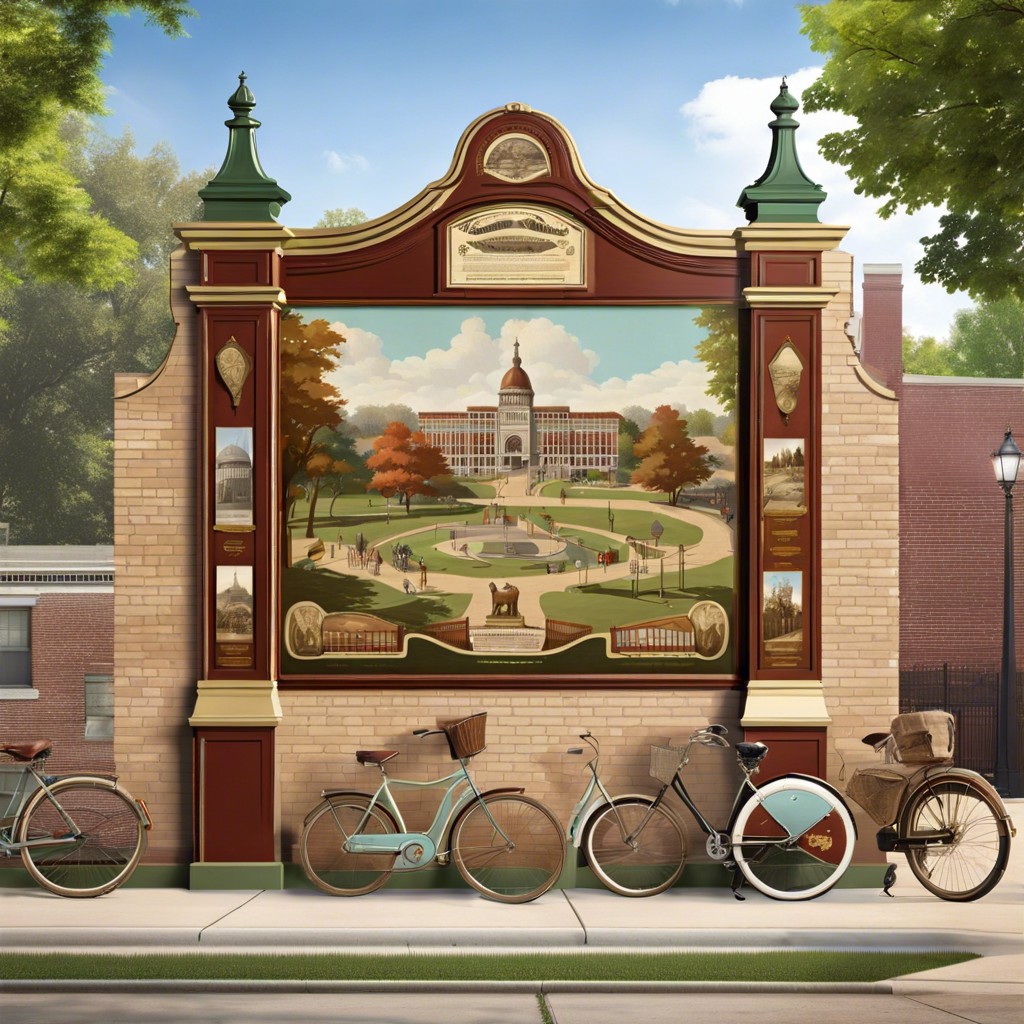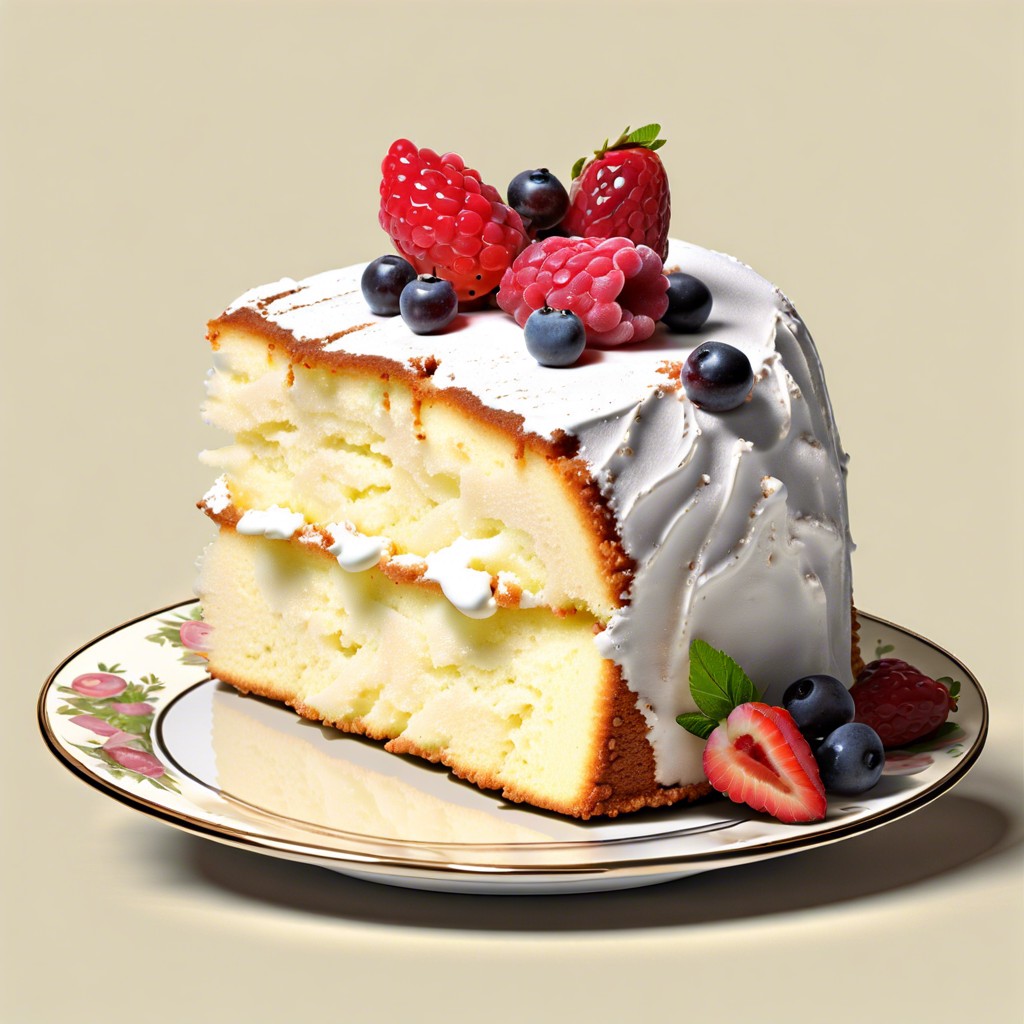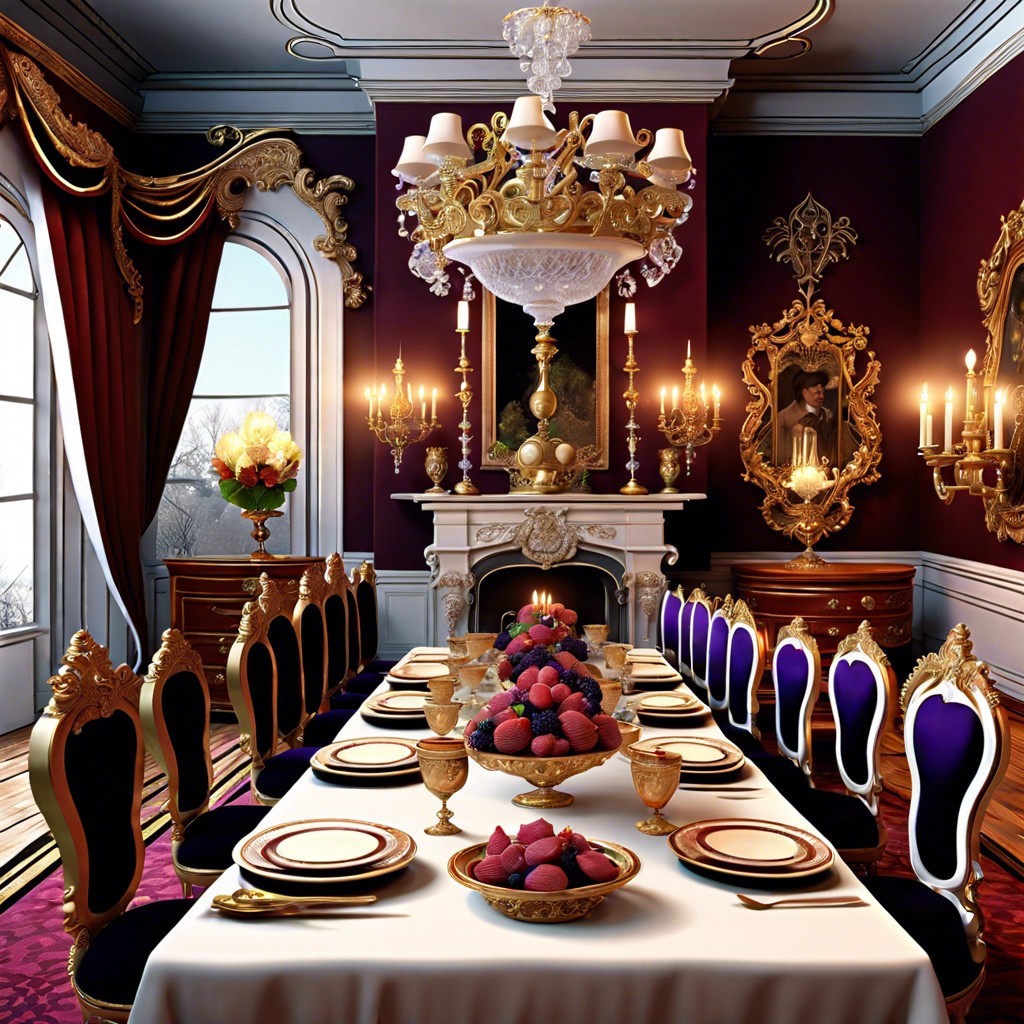Last updated on
This article discusses vintage rhinestone jewelry, covering its history, types, and tips for identifying authentic pieces.
Key takeaways:
- Vintage rhinestone jewelry originated in the 18th century, and its popularity grew with advancements in manufacturing and technology in the 19th and 20th centuries.
- Vintage rhinestone jewelry comes in various types, including crystal and acrylic, with crystal being the most sought after for its clarity and brilliance.
- Notable vintage rhinestone jewelry designers and brands include Juliana, Eisenberg, Weiss, and Trifari, each known for their unique style and craftsmanship.
- Authenticating vintage rhinestone jewelry involves examining signs of aging, the craftsmanship, and looking for hallmarks and signatures.
- When buying or selling vintage rhinestone jewelry, research, checking the condition, utilizing online platforms, consulting specialist dealers and shops, and having pricing knowledge are key.
History and Origin of Vintage Rhinestone Jewelry
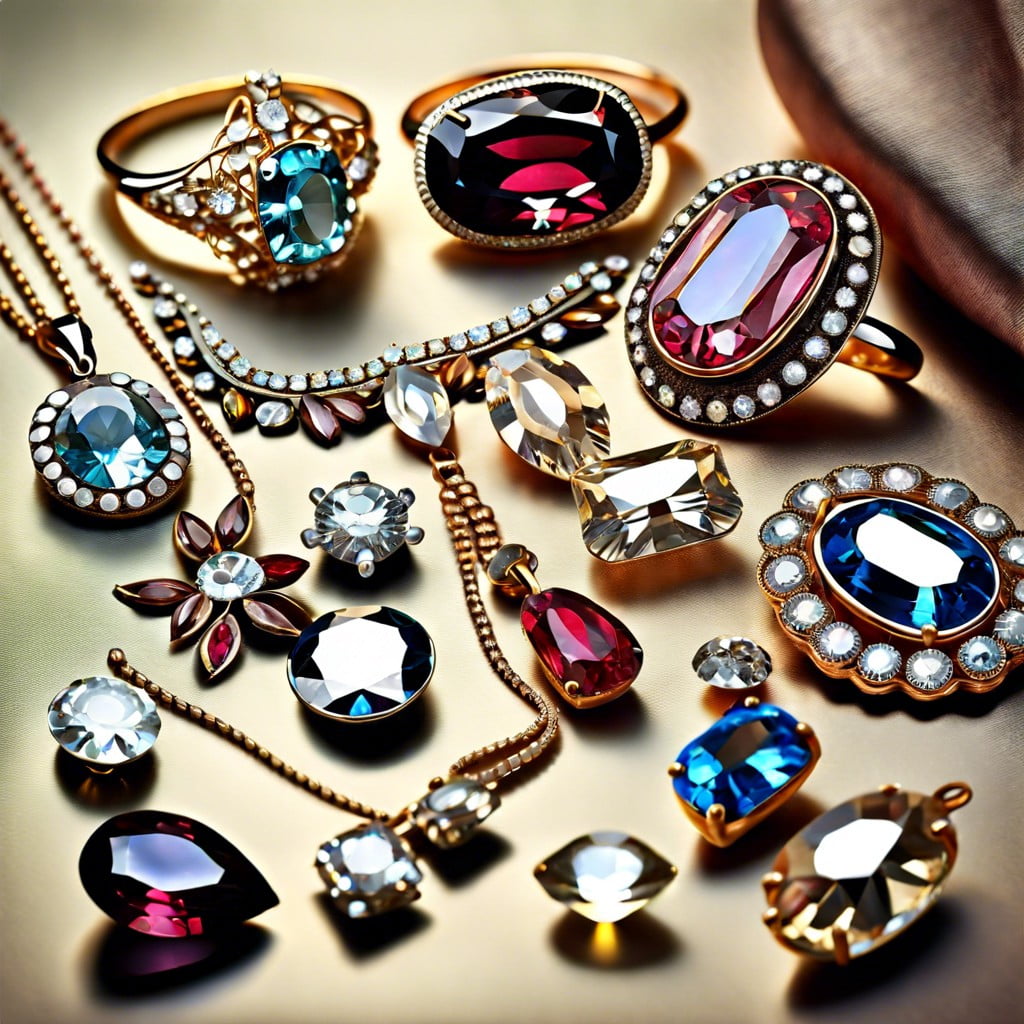
Rhinestones, initially rock crystals gathered from the Rhine River, became popular in the 18th century when jeweler Georg Friedrich Strass had the idea to imitate diamonds by coating the lower side of glass with metal powder. By the 19th century, these faux gems were being mass-produced, and with the advent of new technologies, the quality and variety significantly improved.
During the 20th century, rhinestone jewelry found its place in the mainstream fashion world, thanks in part to Hollywood’s glamor era. Stars like Elizabeth Taylor and Marilyn Monroe often adorned rhinestone pieces, which fueled their desirability. By the 1950s, rhinestone jewelry was not just a symbol of luxury for the elite but a staple accessory for the everyday woman, available in a wide array of colors and designs to match various outfits and occasions.
The fascination with vintage rhinestone jewelry continues today as both collectors and fashion enthusiasts seek to capture the timeless sparkle that these pieces bring. This enduring appeal underscores their historical significance as much as their aesthetic value.
Types of Rhinestones Used in Vintage Jewelry
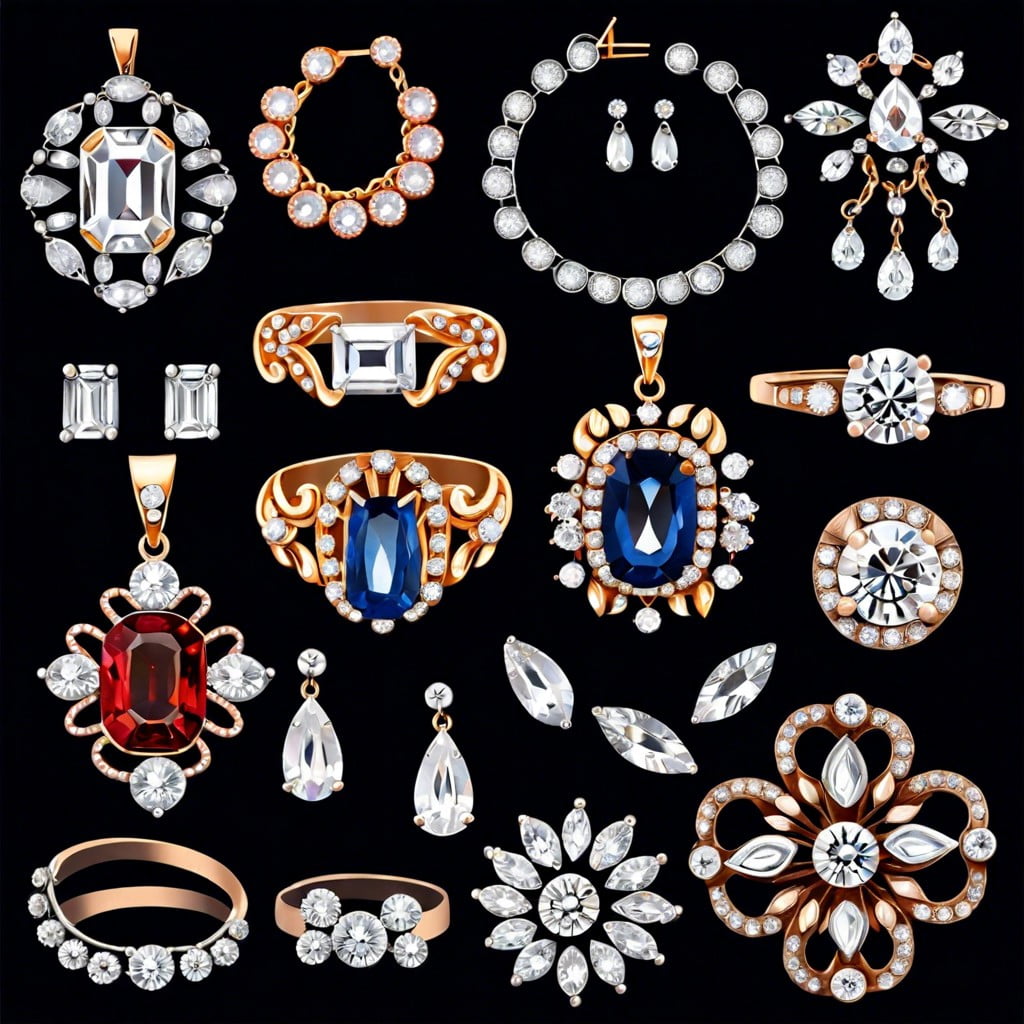
Rhinestones, originally rock crystals gathered from the river Rhine, have evolved in their manufacture and use in jewelry. By the early 20th century, glass or acrylic was commonly substituted, bringing sparkle to the masses at a fraction of the cost of real gems.
Crystal rhinestones are the most sought after for their superior clarity and brilliance, created by adding lead to glass. They capture and reflect light in a way that mimics diamonds, often used in intricate designs and statement pieces.
Acrylic rhinestones, lighter and less durable, offered a budget-friendly alternative. Easily molded into various shapes and sizes, they enabled expansive creativity in design, though they lack the depth and sparkle of glass.
Color played a huge role in the appeal of these pieces, with rhinestones available in a spectrum of hues. Techniques like foiling applied to the back of the stones enhanced their reflectivity and made them pop against any outfit.
Today’s collectors and fashion enthusiasts continue to cherish these pieces for their historical value and timeless charm. They represent an era of glamour and creativity, making each piece a cherished addition to any collection.
Notable Vintage Rhinestone Jewelry Designers and Brands
Juliana, also known as DeLizza & Elster, is celebrated for their intricate designs featuring clusters of rhinestones. Their pieces, often unmarked, require a keen eye to identify but are highly prized by collectors for their craftsmanship.
Eisenberg originally focused on clothing but became renowned for their high-quality rhinestone jewelry in the 1930s. Their distinctive use of bright, often large, rhinestones set in intricate patterns makes their pieces sought after.
Weiss, founded in 1942, is known for the dazzling array of colors and superior clarity in their rhinestone work. Collectors often seek out Weiss for their well-crafted floral and figural designs that utilize multicolored rhinestones.
Trifari, led for many years by designer Alfred Philippe, stood out for their use of rhodium plating, which added a luxurious finish to their exquisite rhinestone pieces. Trifari’s elegant and sophisticated designs often mirrored the high-end jewelry trends of their times.
Each brand brought its unique style and innovation, significantly shaping the landscape of vintage rhinestone jewelry. Collectors and enthusiasts appreciate these pieces not only for their beauty but also for the history encapsulated within each design.
How to Authenticate Vintage Rhinestone Jewelry
Authenticating vintage rhinestone jewelry requires a keen eye for detail and some basic knowledge about its characteristics. Look for signs of aging, such as discoloration or metal wear, typical in genuine vintage pieces. The back of the jewelry can reveal much about its authenticity; older pieces usually feature more intricate craftsmanship and soldering than those produced more recently.
Examine the stones closely. True vintage rhinestone should not be too perfect; irregularities in cut and setting can indicate age. Manufacturers in the past often used different techniques compared to modern practices, and this can be evident in the settings.
Hallmarks and signatures are crucial clues. Many renowned designers and brands stamped their creations. Familiarize yourself with these marks to identify notable pieces and distinguish reproductions from the originals.
Finally, consult with experts or utilize resources like reference books and online forums dedicated to vintage jewelry. Peer insights and professional assessments can provide additional confirmation of an item’s age and authenticity.
The Market: Buying and Selling Vintage Rhinestone Jewelry Today
The demand for vintage rhinestone jewelry has surged, thanks to its nostalgic allure and craftsmanship. Here’s how you can navigate today’s market whether you’re looking to buy or sell:
- Research is key: ** Collectors should familiarize themselves with period-specific styles and markings. Websites, books, and collector forums are excellent resources for learning.
- Check the condition: ** Look for intact settings, minimal wear, and bright stones. Condition significantly influences price.
- Online platforms: ** eBay, Etsy, and Ruby Lane are prime spots for buying and selling. High-quality photographs and detailed descriptions are vital for successful transactions.
- Specialist dealers and shops: ** They often have authenticated, high-quality pieces. Building a relationship with reputable sellers can lead to finding exquisite pieces and good deals.
- Pricing knowledge: ** Understanding current market trends and prices can help sellers set reasonable prices and buyers to negotiate better.
Venturing into the vintage rhinestone jewelry market can be rewarding if you approach it with knowledge and caution. Happy hunting!
